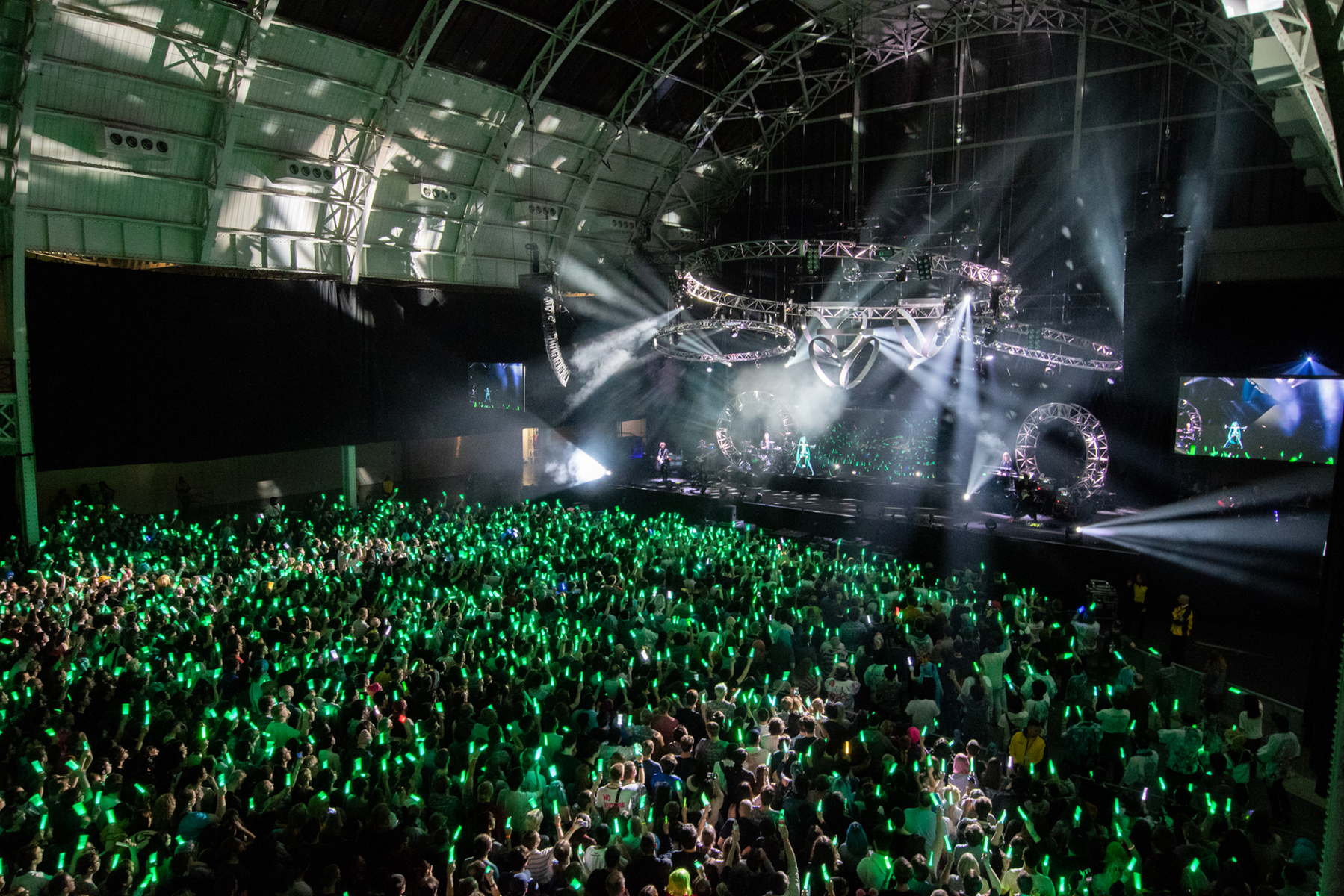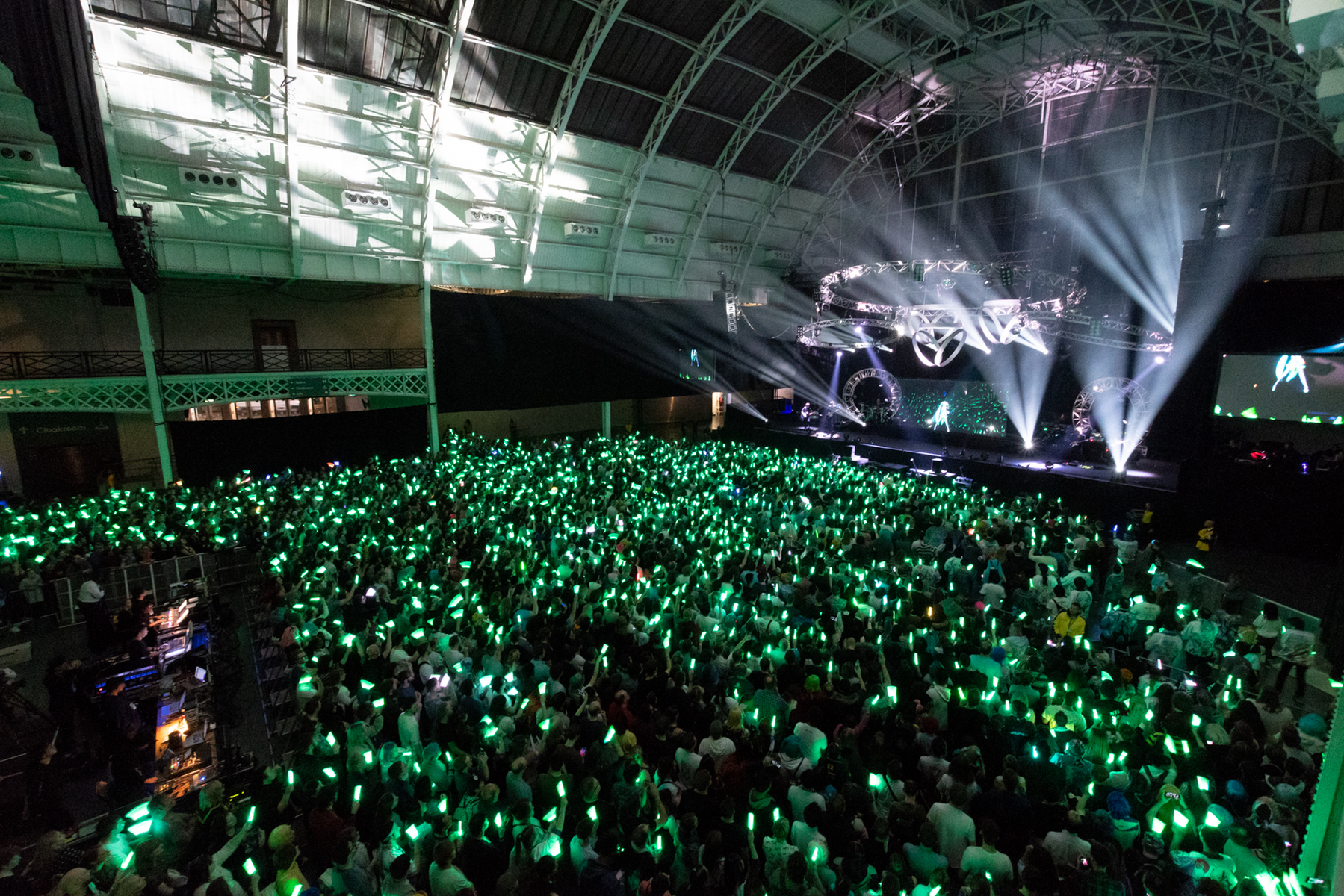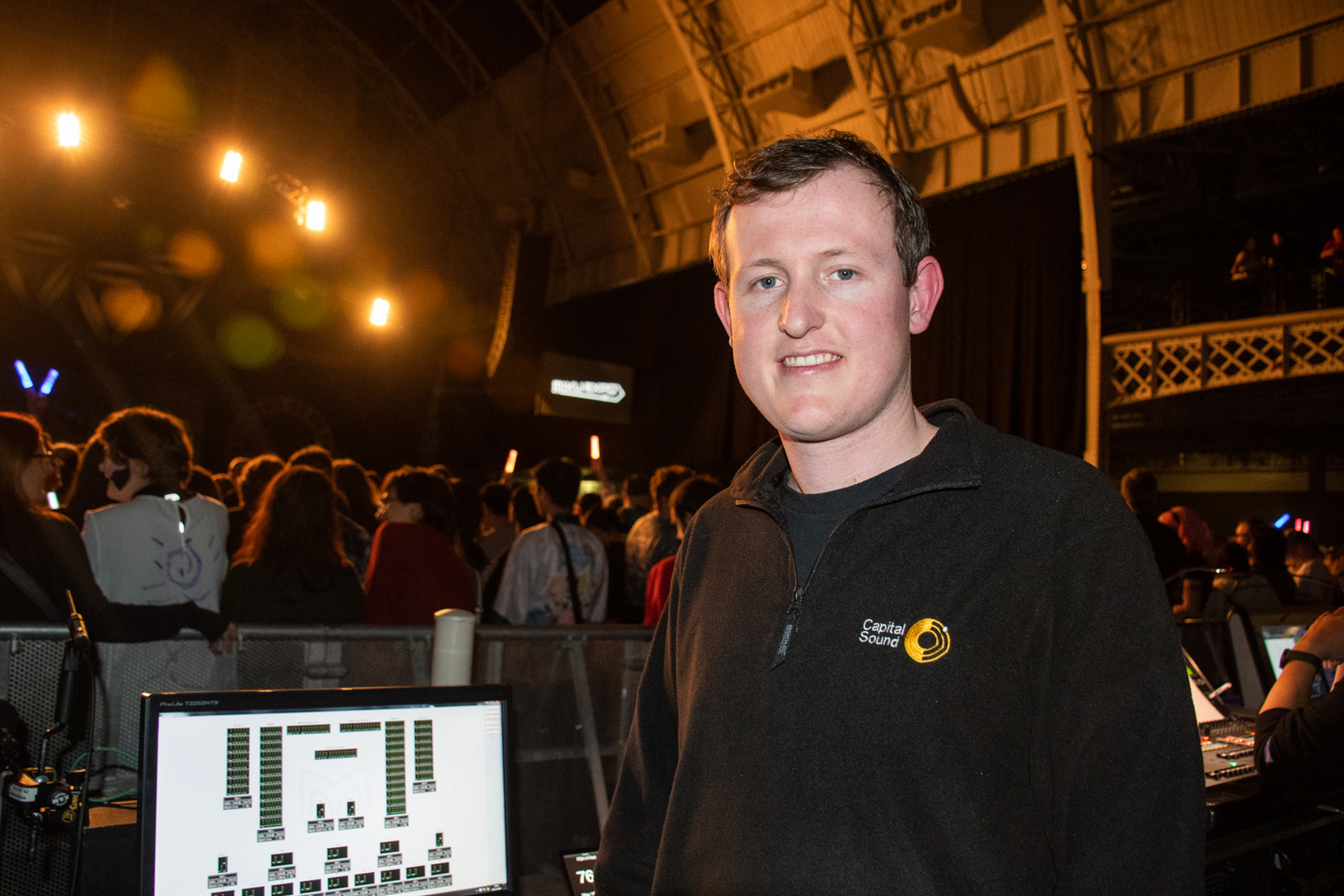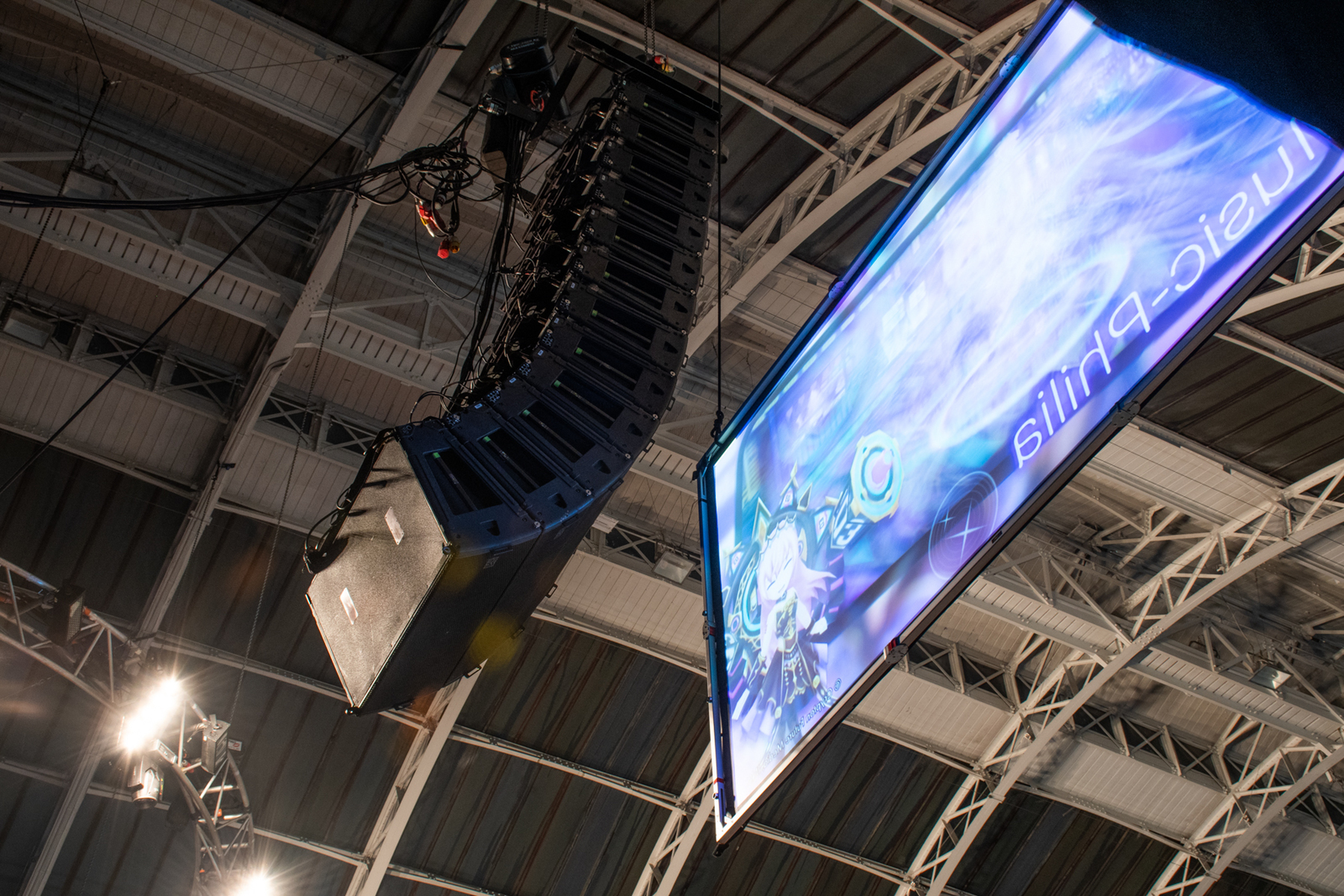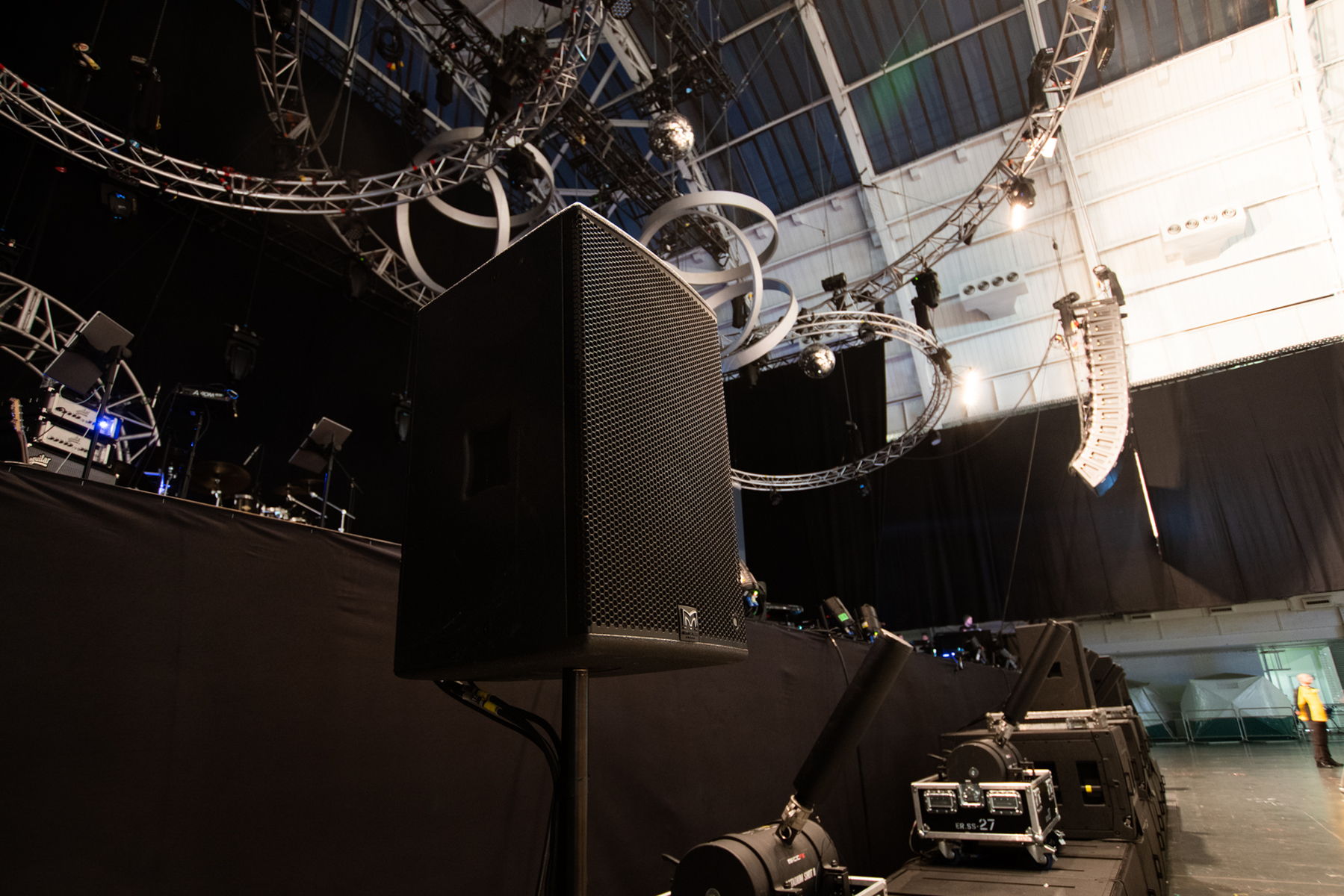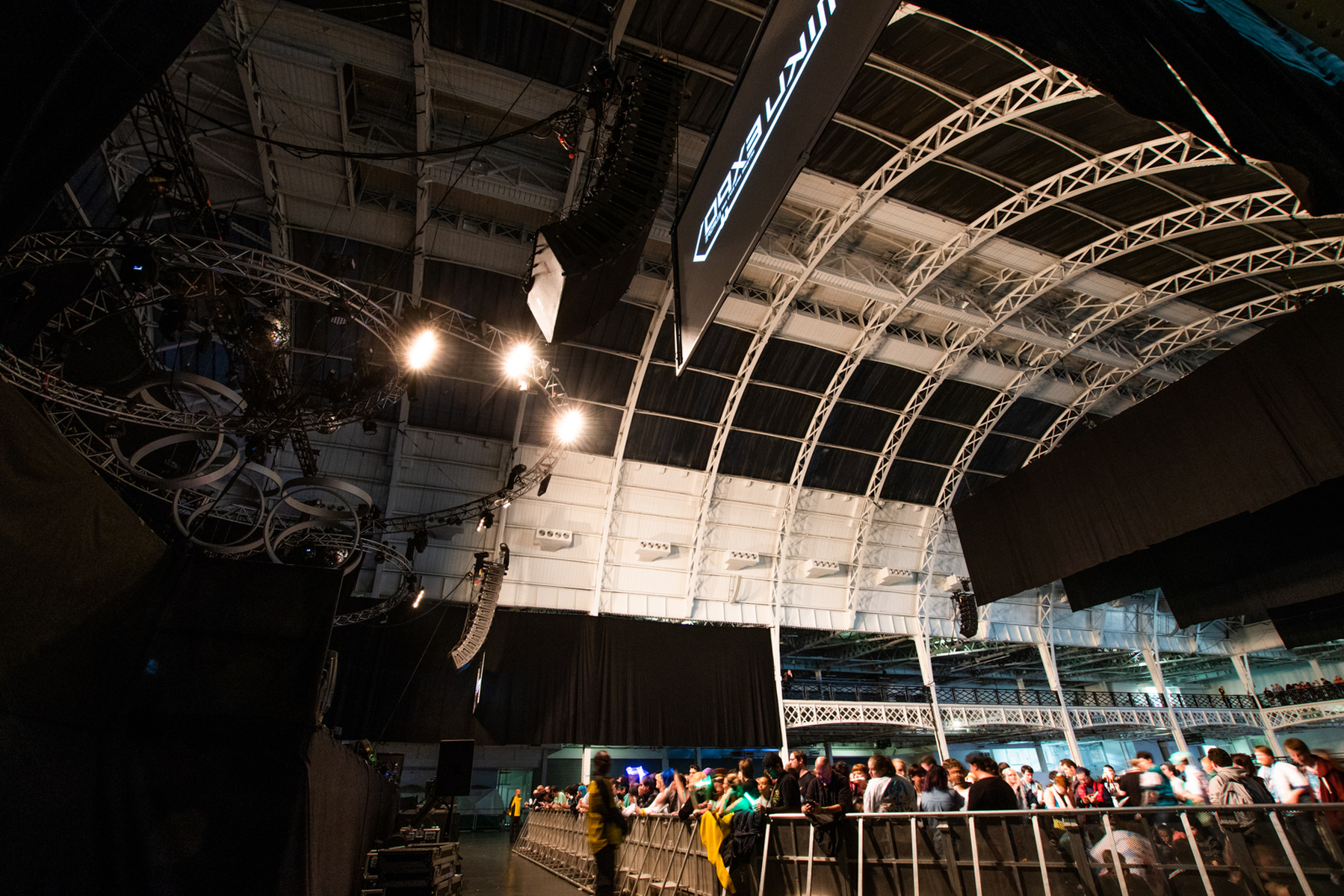MLA ON TOUR WITH 3D ‘ANDROID’, HATSUNE MIKU
Capital Sound recently completed one of their more unusual mini-tours when they provided sound reinforcement, including Martin Audio’s MLA, for three shows by Japanese ‘android diva’ Hatsune Miku. The ‘Vocaloid’ music sensation uses a computer generated voicebank developed by Crypton Future Media.
This virtual persona is actually a 16-year-old blue haired girl, who is seen onstage as a 3D hologram projection. Her repertoire is entirely original and she has over 2.5 million followers on social media.
The Expo 2018 Europe tour came to Capital via Jamal Chalabi of Proper Productions, with whom they work frequently. Since the London date was the densely populated Kensington Olympia, a hugely noise sensitive site, it was obvious that only MLA would offer the level of containment necessary while reaching the considerable levels required by the Japanese production.
In addition to Olympia, Capital supported the tour in mainland Europe at La Seine Musicale, Paris, and Cologne’s 18,500-capacity Lanxess Arena.
With three such diverse venues, according to Capital crew chief Amy Newton-Smith, selecting MLA had been a “no brainer”. However, it required the genius of system tech Ben Turnbull to deliver a consistent and first class sound — particularly when confronted with sound that would be running at 102dB.
However, according to the crew chief, the shows were exceptional, in part due to the live backing band, comprising two guitars, bass, keys and drums, all playing to a click track, with Hatsune’s vocals triggered by Pro Tools.
MLA provided its usual excellent coverage.
“She was projected as a 3D hologram, looking just like a real artiste on stage, with all the moves—foot on the wedges and really rocking out,” remarked Amy.
The main PA comprised 11 MLA elements and an MLD Downfill each side, with 12 MLX subs along the front. Side hangs consisted of eight MLA Compact per side and four DD12s perched on the subs provided front fills, while a pair of Martin Audio XD12s on stands were used for talkback. At Olympia, where no side hangs were necessary, the MLA Compacts were redeployed as delays.
The tour provided a real test for system tech, Turnbull — particularly at Olympia, where concerts rarely take place. “Vanguardia had done the acoustic measurements and were expecting levels of 92dB(A), but we managed to squeeze 98dB(A), with a lot to spare, which was more than anticipated.”
He triggered the ‘Hard Avoid’® feature in the dedicated DISPLAY software to good effect. “I used it on the glass wall at the end of the hall, both for delay and main hangs and on the stage as well, because there were projectors located there and we had to keep the vibration to a minimum.”
Olympia actually sounded better for being notched back, he said. “We managed to tame some of the harshness by bringing the level down and avoided ‘exciting’ the room too much. We took some of the midrange out to provide a warmer sound.”
Lanxess Arena also proved a triumph for MLA where, although not full, tickets were sold right to the back of the arena. “With 12 boxes that seemed a push,” admits Turnbull. “So we flew the PA a lot higher, used a couple of house fills for delays and drove the DD12s harder than we would normally. This solution worked well, and we got the consistency we’d been hoping for at every seat.”
Overall, he said he was delighted with the quality of the sound. “MLA provided its usual excellent coverage. I was very happy with the way things went and I think the Japanese production team were as well.”
Amy agreed. “Everyone seemed delighted — we were able to achieve great levels at Olympia, and received no complaints about any noise spillage.”
Other Capital Sound techs on the tour were David Preston and Oliver Fallon.
Photos: © Crypton Future Media, INC. www.piapro.net / © SEGA
Graphics by SEGA / MARZA ANIMATION PLANET INC.
Production by Crypton Future Media, INC.
